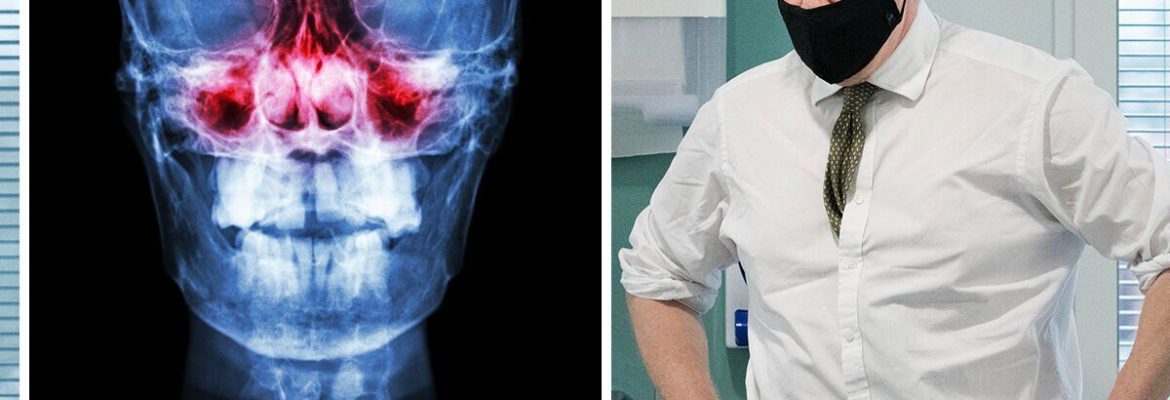Sinus operations explained: Why Boris Johnson had surgery – 4 common causes
Charley Webb discusses her sinus pain on Instagram
We use your sign-up to provide content in ways you’ve consented to and to improve our understanding of you. This may include adverts from us and 3rd parties based on our understanding. You can unsubscribe at any time. More info
Boris Johnson is recovering at home following a “routine” procedure on his sinuses earlier today. The minor operation was performed while the PM was under general anaesthetic, though the specifics of the surgery have not yet been revealed. So why did Mr Johnson have the procedure? Here are some of the most common sinus operations explained.
Mr Johnson’s spokesman, Max Blain, said the operation had been scheduled in advance and was performed by medics working for the NHS at a London hospital.
The short surgery was completed in just a matter of hours, with reports stating that Mr Johnson had been driven to hospital at around 6am on Monday and was returned home by 10am.
In an update this afternoon, Mr Blain said: “He is feeling well and has come back down to the office and is due to take meetings this afternoon. It went well, and he’s pleased to be back in Number 10.”


What is a sinus operation for?
Sinus surgery is done to correct issues with the series of cavities around the nasal passages known as the sinuses.
Common reasons for getting sinus surgery include:
- Nasal polyps – enlarged clusters which swell the nasal lining
- Deviated septum – one side of the nose has reduced air flow
- Sinusitis – swelling of the passages causing pressure on eyes, nose, forehead, coughing, congestion and more
- Recurrent or chronic sinus infections
While allergy treatments and antibiotics are the first call to action to help patients find relief, problems, severe cases may need surgery to open up pathways and improve airflow.
According to the medically accredited website Healthline, there are four main types of sinus surgery, including:
- Functional endoscopic surgery
- Turbinate reduction surgery
- Balloon sinuplasty
- Sinus ostial dilation surgery

Functional endoscopic sinus surgery (FESS)
Maybe one of today’s most common sinus surgery options, FESS is a procedure that utilises a magnifying endoscope to both view the sinuses and remove any affected tissue or bone.
It’s reconstructive to open the connection between the sinuses and nose, improving draining and reducing blockages while flushing out infected material.
Ostial dilation surgery
Balloon ostial dilation (BOD) may be considered an alternative to endoscopic sinus surgery for those with recurrent acute and chronic sinusitis.
The procedure involves placing a guidewire in the sinus ostium and advancing a balloon over the guidewire.
DON’T MISS:
Boris Johnson health: PM taken to hospital as Raab forced to step up [LATEST]
How to get rid of a blocked nose – most effective methods [INSIGHT]
Why the change in seasons can cause headaches and sinus pain [ANALYSIS]

Balloon sinuplasty
Balloon sinuplasty is a less invasive procedure designed to help patients find relief from chronic sinusitis symptoms.
The method is a straightforward application wherein the doctor inserts a flexible balloon catheter into the sinus passage.
Once the balloon is appropriately positioned, it’s slowly inflated to open up the sinus cavity.
A saline solution is used to help flush out the mucus, allowing patients an instant sense of relief from pressure once the fluid drains.
The gentle pressure of the balloon against the sinus cavity helps to restructure the bones and cartilage. After its removal, the sinuses should feel clearer.
Turbinate reduction surgery
The turbinates inside the nose can become swollen and inflamed from infection, irritation, or allergies – all of which could worsen symptoms of sinus issues by causing nasal obstruction and excess production of mucus.
Turbinate reduction aims to reduce the size and swelling making it easier to breathe, often using radiofrequency and the insertion of a needle-like instrument into the turbinate.
Undergoing turbinate reduction surgery does not affect the size or shape of the nose, and patients shouldn’t experience any long-term side effects.
How long is the recovery from a sinus operation?
Sinus surgery generally does not warrant an overnight stay in hospital.
However, Healthline recommended that patients have someone to drive them home from the procedure.
The recovery process can take up to five days to begin feeling “up to your regular physical activity”, and that patients should avoid activities that elevate blood pressure.
Source: Read Full Article
